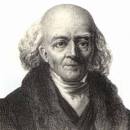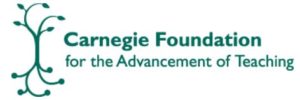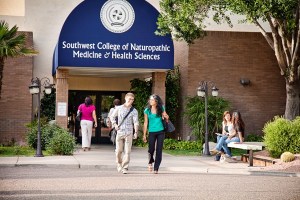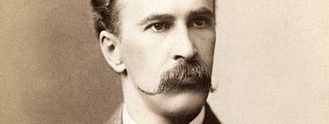“A new school of practitioner has arisen,” says Dr. Osler, “which cared nothing for homeopathy and less for so-called allopathy. It seeks to study, rationally and scientifically, the action of drugs, old and new.”
The Journal of the American Medical Association, Aug 14, 1909
Medicine as we know it today was created in a few short years. The infrastructure for education, funding, research and the organization of medicine came about not from doctors, but from the financial giants of the time. Dr. Osler was in the middle of it, seeing it, in 1909.
Dr. William Osler is known as “the father of modern medicine.” That is because he brought medical education out of purely classroom learning into the wards to see patients and established the medical residency program. No wonder he is nervous about new practitioner arising. He was sympathetic to homeopathy, in fact, in that spirit he insisted:
Ask not what kind of illness the patient has, ask what kind of patient has the illness…
What was going on at that time?
Besides simple folk medicine, the common practices of the time included allopathy, homeopathy, the eclectics, osteopathic and chiropractic.
Allopathy
 It is agreed by most medical historians that this type of treatment did more harm then good. It was often barbaric and even unscientific. It included:
It is agreed by most medical historians that this type of treatment did more harm then good. It was often barbaric and even unscientific. It included:
- Bloodletting and leeches (Benjamin Rush, father of American medicine used it widely)
- Poisoning with arsenic, lead, mercury in various forms (calomel, injecting)
- Purging with castor oil and strong herbs
- Use of whiskey and opium and heroin
- Unsanitary surgery practices
Homeopathy
 It is based on an ancient principle of the “law of similars” codified in 1810 in The Organon of the Medical Art by Samuel Hahnemann, a German physician. Therefore, homeopaths have an integrated, coherent and systematic basis for therapeutic practice.
It is based on an ancient principle of the “law of similars” codified in 1810 in The Organon of the Medical Art by Samuel Hahnemann, a German physician. Therefore, homeopaths have an integrated, coherent and systematic basis for therapeutic practice. - It uses specially prepared homeopathic remedies to re-balance the “vital force” within which was creating the symptoms to show its imbalance.
- Wildly popular in the 1800’s with women, religious leaders, literary giants, entrepreneurs, European royalty, educated and upper class as well as the poor, Homeopathy had the sympathy of the press and the general public. (For example: Mary Baker Eddy, John D Rockefeller, Mark Twain, English royal family)
- Its track record in the 1800’s with epidemic diseases America and Europe was phenomenal. There were across the board 1/8 the fatalities as any other treatment. (In the Cincinnati cholera epidemic, 3% of homeopathically treated patients died vs 48 – 60% of other treatments)
- In 1844, homeopaths formed the American Institute of Homeopathy, the first American medical society. (in 1871 it accepted women) (women got the vote in 1920)
Eclectic Medicine
- It is a branch of Botanical medicine in America, especially using Native American plants.
- Also used other substances and physical therapy for treatments.
Osteopathic
- Founded by Andrew Taylor Still, the focus initially was on manipulating the joints and bones to treat and spare from the side effects of drugs.
- It also included hydrotherapy, bone setting, magnet healing and dietary recommendations.
- In 1892, he founded the American School of Osteopathy.
Chiropractic
- In 1897 DD Palmer, magnetic healer, opened the Palmer School of Cure systematizing physical manipulation.
Enter the Second Industrial Revolution
 More rapid industrial development picked up speed from 1870 to the first world war in 1914. What was different from the first industrial revolution was that modern organizational methods for operating large scale businesses over vast areas came into use.
More rapid industrial development picked up speed from 1870 to the first world war in 1914. What was different from the first industrial revolution was that modern organizational methods for operating large scale businesses over vast areas came into use.
Two of the biggest economic forces in history, Carnegie and Rockefeller, made an industry out of medicine. It was focused on market growth. With all of Carnegie’s oil and coal productions, there were mountains of waste. What better use than to make a profitable industry out of it? Organized medicine became an industry, with its focus creating pharmaceutical drugs out of that waste.
It was not enough to create our electricity from coal and oil, run our transportation system, run our factories, the use of fossil fuels makes our clothes and home appliances, grows our food, stores our food (in plastic) as well as makes our medicines.
Medicine is derived from the tar acids such as salicylic acid, nitro phenol and picric acid. Some medicines are also obtained from benzol which comes from light oil. – Kentucky Coal Education
These are the pharmaceuticals, the drugs that Dr. Osler saw being studied and used.
The American Medical Association
 In 1847, the American Medical Association was formed, perhaps as a backlash. Remember, three years earlier the American Institute of Homeopathy was formed. Homeopaths were treating a lot of people successfully, and the allopaths were killing people. No wonder the allopaths could not make a decent living wage!
In 1847, the American Medical Association was formed, perhaps as a backlash. Remember, three years earlier the American Institute of Homeopathy was formed. Homeopaths were treating a lot of people successfully, and the allopaths were killing people. No wonder the allopaths could not make a decent living wage!
The founding principles of the AMA were:
- all doctors should have a “suitable education”
- a “uniform elevated standard of requirements for the degree of M.D. should be adopted by all medical schools in the U.S.”
At the time, they were transparent about their real goal to build a government-enforced monopoly for the purpose of dramatically increasing physician incomes and rescuing their public reputation.
They did it in two ways:
- use the coercive power of the state to limit the practices of competitors such as homeopaths, midwives, nurses, and later, chiropractors
- significantly restrict entrance to the profession by restricting the number of approved medical schools in operation
The AMA started with excluding homeopaths a members, resulting in the loss of a medical license and the ability to practice medicine. Then they excluded doctors who consulted with homeopaths. Talk about coercion!
The AMA created its Council on Medical Education in 1904 with the goal of shutting down more than half of all medical schools in existence.
 Also in 1904, the Carnegie Foundation was formed, and later it was added: for the Advancement of Teaching.
Also in 1904, the Carnegie Foundation was formed, and later it was added: for the Advancement of Teaching.
This foundation provided pensions to teachers, but in order to qualify for pensions for their teachers, institutions of learning need to meet the Foundation’s standards. Of course, those standards excluded Homeopaths, Osteopaths, and so on.
Then the Carnegie Foundation moved into research funds and endowments, again deciding criteria in order to shape the future of medicine in their image.
All Made Official in the 1910 Flexner Report
 The Carnegie Foundation for the Advancement of Teaching further shaped medicine by hiring Abraham Flexner to cross the country, visiting every medical school and evaluating it. The problem was that he was neither a doctor nor a recognized authority on medical education. The famous 1910 Flexner report was submitted to Congress.
The Carnegie Foundation for the Advancement of Teaching further shaped medicine by hiring Abraham Flexner to cross the country, visiting every medical school and evaluating it. The problem was that he was neither a doctor nor a recognized authority on medical education. The famous 1910 Flexner report was submitted to Congress.
In the report, Flexner assessed 32 sectarian schools, 15 homeopathic (down from 22 in 1900), 8 eclectic, 1 physiomedicine, and 8 osteopathic. It resulted in closing 25 medical schools in three years and reducing the number of students by 50% at remaining schools.
Flexner report resulted in closing all but 2 of the homeopathic medical schools. Most of the women’s and black medical schools were destroyed as well. Also, Medical schools had to attached to universities with a clinic and university hospital so they could do research. Of course, this research was aimed at legitimizing the use of pharmaceutical drugs that were being developed.
Physicians who used these drugs and their organization, the AMA, opposed homeopathy and other established forms of medicine. Systematically and intensely these other systems were attacked. The seal on the deal was the closing of medical schools as a result of the Flexner report. Economics drove doctors to form these alliances because they were not making money. Money poured into schools that studied and taught the use of drugs.
 Rockefeller Foundation was founded in 1913. John D Rockefeller was a deep proponent of homeopathy. He intended to give grants to homeopathic schools, but his financial adviser, Frederick Gates who was not in favor of homeopathy, diverted the grants. Following the direction of the Flexner report, the Rockefeller Foundation developed national standards for medical schools that were seeking grants.
Rockefeller Foundation was founded in 1913. John D Rockefeller was a deep proponent of homeopathy. He intended to give grants to homeopathic schools, but his financial adviser, Frederick Gates who was not in favor of homeopathy, diverted the grants. Following the direction of the Flexner report, the Rockefeller Foundation developed national standards for medical schools that were seeking grants.
Drug companies published journals in which they could support the drug industry and discredit homeopathy. Even in a 1906 issue of the Journal of the American Medical Society, an article commented that “the medical press is profoundly under the influence of proprietary interests [drug companies].”
1918
The great Spanish Flu Epidemic swept the world in 1918. Scientific medicine with pharmaceutical drugs and vaccines had nothing. Scientists frantically tried to come up with something and ended up empty-handed. Eighty-five percent of those who contracted it died, even 50% of healthy 20 – 40 year olds! On the other hand, homeopaths saved 97% of their patients. Statistics prove it.
Ironically, Dr. Osler died in 1918 from complications of the Spanish flu. His lungs let him down. He was 70 years old.
2004
 In the 100 years since the Council on Medical Education was established, the population of the United States has increased in size by 284%, yet the number of medical schools has declined by 26% to 123. It’s still happening. The doctor shortage is manufactured.
In the 100 years since the Council on Medical Education was established, the population of the United States has increased in size by 284%, yet the number of medical schools has declined by 26% to 123. It’s still happening. The doctor shortage is manufactured.
Yet, before the 1990’s there were only two Naturopathic Medical Schools. Since then, seven total have been established in North America and are accredited by the Council of Naturopathic Medical Education.
This is the opposite trend. I myself graduated from Southwest College of Naturopathic Medicine in 1998.
Is this the future of medicine?
Please comment below.
WANT TO USE THIS ARTICLE IN YOUR NEWSLETTER OR WEB SITE?
You can, as long as you include this complete blurb with it: “Naturopathic Physician Dr. Cheryl Kasdorf is a doctor who listens and has answers with a natural approach that works. She is known as the go-to person to get back your get-up-and-go when it is gone, gone, gone. Get your FREE gift “Dr. Kasdorf’s Health Secrets for Feeling & Looking Great” at drcherylkasdorf.com




